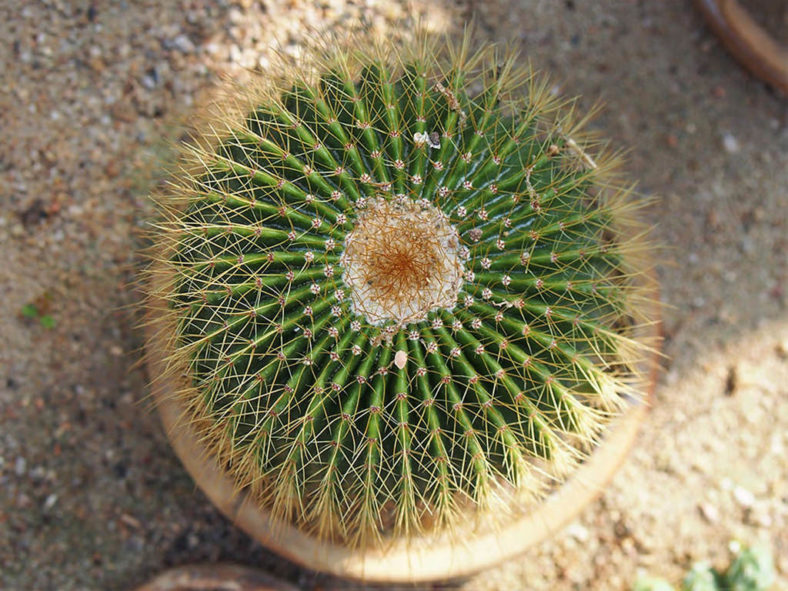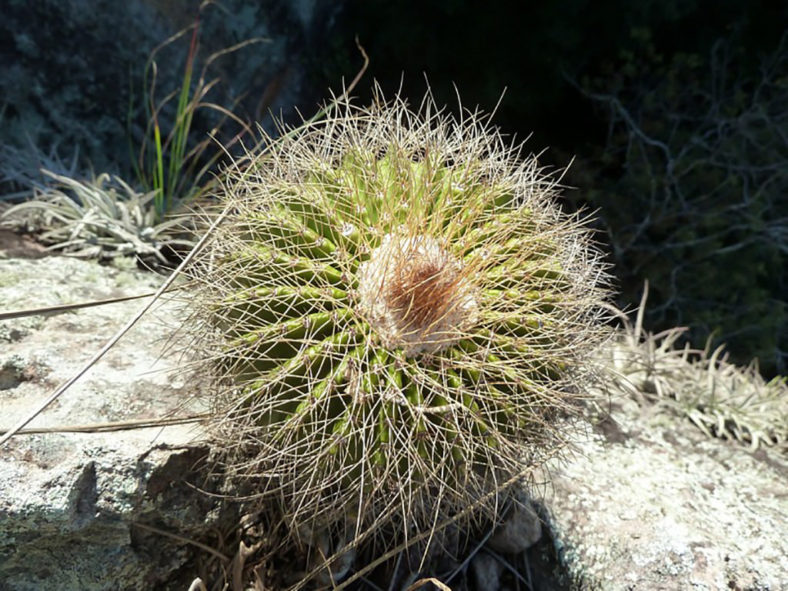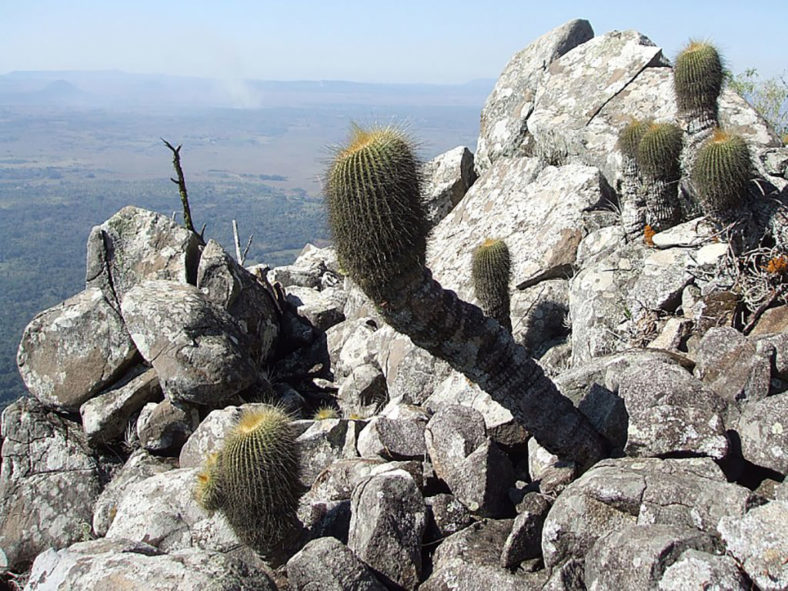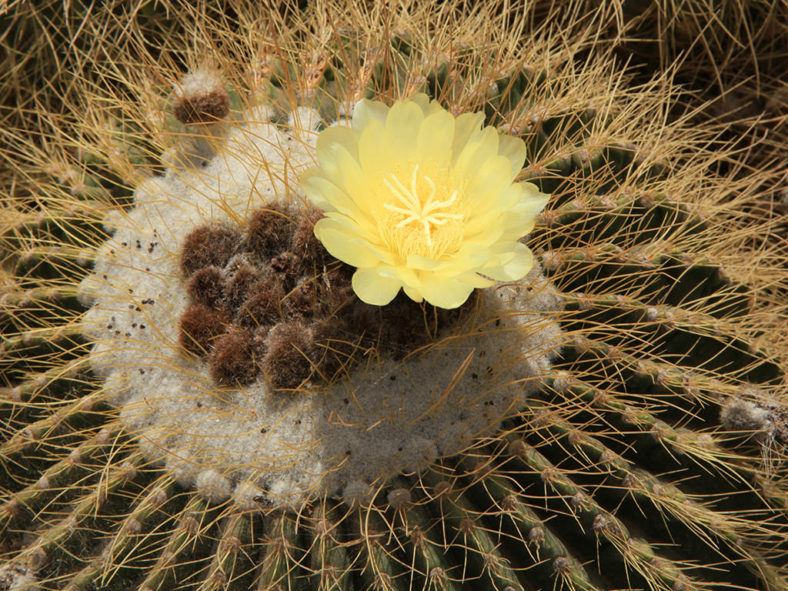Scientific Name
Parodia schumanniana (Nicolai) F.H. Brandt
Synonym(s)
Echinocactus schumannianus, Eriocactus schumannianus, Eriocephala schumanniana, Malacocarpus schumannianus, Notocactus schumannianus
Scientific Classification
Family: Cactaceae
Subfamily: Cactoideae
Tribe: Notocacteae
Genus: Parodia
Etymology
The specific epithet "schumanniana" (pronounced "shoo-mahn-ee-AH-na") honors Karl Moritz Schumann (1851-1904), a German botanist and the first chairman of the German Cactus Society.
Origin
This species is native to Brazil, southern Paraguay, and northeastern Argentina. It grows in open areas within deciduous woods on the steep sides of granite rocks at elevations ranging from 980 to 2,300 feet (300 to 700 m).
Description
Parodia schumanniana is a cactus with green, usually solitary stems that have 21 to 48 straight, sharp, well-marked ribs, each lined with clusters of bristle-like spines. Initially, the stems are spherical but become columnar as they mature. They can grow up to 6 feet (1.8 m) tall and 12 inches (30 cm) in diameter. The spines are straight to slightly curved, golden yellow to brown or red when young, turning gray with age. Each areole bears 1 to 3 central and 4 to 7 radial spines. The central spines (sometimes absent) can grow up to 3 inches (1.2 cm) long, while the radial spines can grow up to 2 inches (5 cm) long.
The flowers are funnel-shaped, ranging from pale yellow to golden yellow, and appear in summer. They can reach up to 1.8 inches (4.5 cm) long and 2.6 inches (6.5 cm) in diameter. The fruits are spherical to ovoid, densely covered with wool and bristles, and contain reddish-brown seeds. They can grow up to 0.6 inches (1.5 cm) in diameter.

How to Grow and Care for Parodia schumanniana
Hardiness: USDA hardiness zones 9b to 11b: from 25°F (-3.9°C) to 50°F (10°C).
If you can grow cacti and succulents successfully, you can likely grow the popular Parodia without too much trouble. However, it's key to remember that Parodies don't like direct sunlight and are accustomed to more even water than many other cacti species. The cactus mustn't be exposed to prolonged dampness and standing water. Never let your cactus sit in a dish of water. To encourage better flowering, allow the plants to enjoy a cooling period in winter and reduce watering significantly. However, unlike other cacti species, you don't need to stop watering entirely. Lastly, ensure that fertilizer is applied during the growing season for the best results.
Repot as needed, preferably during the warm season. To repot a cactus, ensure the soil is dry before repotting, then gently remove the pot. Knock away the old soil from the roots, removing any rotted or dead roots. Treat any cuts with a fungicide.
See more at How to Grow and Care for Parodia.
Links
- Back to genus Parodia
- Succupedia: Browse succulents by Scientific Name, Common Name, Genus, Family, USDA Hardiness Zone, Origin, or cacti by Genus
Photo Gallery
Click on a photo to see a larger version.


